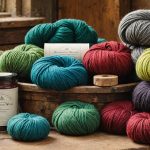Understanding Tent Insulation
Tent insulation plays a crucial role in ensuring a warm and comfortable experience during winter camping. This concept involves installing materials within the tent to limit heat loss and maintain a stable temperature inside, especially when temperatures outside plummet.
There are various insulation types, each offering unique benefits. Synthetic insulation is widely used due to its durability and moisture-resistance capabilities, making it ideal for damp environments. Reflective insulation, on the other hand, helps in bouncing body heat back into the tent, providing an efficient thermal retention solution. Down insulation is another popular choice, known for its excellent warmth-to-weight ratio, though it can lose effectiveness when wet.
Additional reading : Unveiling the best uk campsites offering photography retreats: your comprehensive guide!
The effectiveness of tent insulation heavily depends on the thickness and material density. Thicker materials with higher density provide better barriers against cold, ensuring your body heat isn’t lost to the surrounding air. For campers, understanding the balance between insulation thickness and weight is key to maintaining comfort.
In summary, choosing the right tent insulation is essential for a safe and enjoyable cold weather camping adventure, offering warmth and protection against the elements.
Also to discover : Unlocking the best uk campsites with wellness and spa features: your comprehensive guide to relaxation retreats
Cost Analysis of Tent Insulation Options
Choosing the right tent insulation involves understanding the cost of tent insulation options available. Typically, insulation materials like synthetic, reflective, and down differ not only in their thermal retention properties but also in pricing. Synthetic insulation is often more affordable, balancing cost and durability, making it a common choice for budget camping enthusiasts.
Reflective insulation, known for its excellent heat retention, may have similar pricing to synthetic variants, offering a good middle ground. Down insulation, although superior in warmth-to-weight ratio, tends to be the priciest. This is important when evaluating product pricing, especially for campers prioritising lightweight gear.
For campers on a budget, consider the cost vs. performance analysis. This involves assessing the initial investment against long-term durability and thermal effectiveness. While down is costly, its performance in extremely cold weather may justify the expense if conditions demand optimal warmth.
When outfitting for winter camping, strategic budgeting helps manage costs without compromising on essential camping gear. Evaluating different insulation materials aligns with informed decision-making, ensuring warmth and comfort within your financial plan. Prioritise spending where warmth is crucial to avoid potential hazards in extreme conditions.
Effectiveness of Insulation Materials in Cold Weather
The insulation effectiveness of various materials plays a crucial role in ensuring comfort during cold weather camping. Understanding the performance of insulation types according to factors like R-value and thermal resistance helps in selecting the best options for your needs.
Comparing insulation materials reveals that synthetic insulation offers consistent performance, especially in damp conditions, due to its moisture-resistant properties. Down insulation excels in providing warmth due to its high warmth-to-weight ratio, but its effectiveness diminishes when wet. Meanwhile, reflective insulation boasts superior thermal retention by mirroring body heat back into the tent environment, making it an efficient choice in varied weather scenarios.
When camping in the UK, temperature fluctuations require careful consideration of these factors. The R-value, which measures thermal resistance, is a key indicator of insulation suitability. Materials with higher R-values perform better in extreme cold, keeping tents warm. It’s essential to match insulation choices with typical UK weather patterns to ensure adequate protection.
Overall, understanding these characteristics and their impact on insulation effectiveness enables campers to make informed decisions, ensuring a warm and safe experience amidst cold climates.
Tips for Choosing the Right Tent Insulation
When choosing tent insulation, consider the unique conditions of camping in the UK. The selection guide starts by assessing weather patterns in your intended locations. Colder regions require higher R-value insulation for optimal warmth.
Tent size, shape, and fabric also play a crucial role in your decision. Smaller tents warm up faster, while natural fabrics enhance breathability. Consider these aspects to maintain a balanced camping environment.
It’s also vital to research and consider brand reputation and product performance. Opt for tested brands known for quality and reliability in the insulation market. Trusted brands often provide warranties or guarantees, ensuring a safer investment.
For practical implementation, consider these guiding points:
- Assess the likelihood of wet conditions and choose waterproof options if necessary.
- Look for user reviews to gauge real-world effectiveness.
- Prioritise ease of setup if you are new to winter camping.
These tips for choosing the right tent insulation can significantly enhance your camping experience, ensuring you stay warm and comfortable amidst the UK’s varying climates. Always align your selections with specific camping needs to maximise comfort and protection.
User Experiences and Reviews of Tent Insulations
Gathering user reviews and experiences provides valuable insight into the real-world performance of tent insulation. Many campers who have embraced winter camping have shared their journeys, highlighting the practicality and limitations of various insulation types. This communal feedback can guide you in selecting solutions that align with your specific needs.
Campers often focus on how well insulation maintains warmth in sub-zero temperatures. For example, one user shared that synthetic insulation performed admirably in consistent rain due to its moisture resistance. Meanwhile, others praised reflective insulation for its ability to rapidly increase tent temperature by bouncing body heat back.
Feedback also touches on ease of use and maintenance. Commonly, down insulation is favoured for its exceptional warmth-to-weight ratio, but requires careful handling to maintain its properties. Seasoned campers often recommend specific brands known for durability and efficiency, guiding new entrants in making well-informed choices.
Exploring these experience sharing insights through forums or camping groups can significantly enhance your decision-making. Engaging with the camping community ensures you invest in materials that provide optimal thermal retention tailored for your winter adventures.
Setup and Maintenance of Tent Insulation
Proper tent setup is crucial to maximize insulation efficiency during winter camping. Begin by spreading out the insulation material evenly across the tent floor, ensuring full coverage without any gaps. This ensures that the insulation performs optimally by trapping heat inside.
When it comes to maintaining your insulation, regular care can significantly extend the life of the materials. After each use, shake out any moisture and debris before packing away. Storing insulation in a dry, ventilated space prevents deterioration caused by mold or mildew.
Avoid common setup errors such as mistakenly overlapping reflective surfaces, which can reduce efficiency by misdirecting heat. Instead, ensure that reflective materials are oriented correctly to bounce heat back into the tent.
Another tip for effective camping gear care is to clean synthetic insulation as recommended by the manufacturer, often using mild detergents without harsh chemicals. Down insulation requires gentle handling and should be dried completely after washing to maintain its loft and thermal properties.
By applying these maintenance advice and avoiding common missteps, campers can preserve the performance and durability of their tent insulation for future winter adventures.
Enhancing Warmth and Comfort in Winter Tents
Boosting camping comfort during winter demands strategic additions beyond standard tent insulation. Incorporating layers and accessories amplifies warmth significantly. For example, thermal sleeping pads and insulated blankets add a crucial barrier against ground cold, complementing the tent’s primary insulation layer.
Utilising warmth strategies such as hot water bottles or wearable sleeping bags can enhance heat retention. These simple, energy-efficient solutions offer an immediate increase in comfort levels within the tent. You might also consider layering with merino wool clothing, renowned for its excellent thermal properties even in damp conditions.
Alternatively, portable heaters provide direct heat, albeit with the necessity for caution. Always prioritise heaters with safety features like automatic shut-off and ensure proper ventilation to prevent carbon monoxide build-up. Personal experiences from seasoned winter campers suggest testing heating equipment before a trip to familiarise oneself with operation and safety protocols.
To refine your setup, seek advice from forums where fellow campers often share winter camping tips, emphasizing adaptable solutions they’ve found effective. These collaborative insights can be invaluable, sparing you trial and error while maximising both warmth and safety during cold-weather outings.











